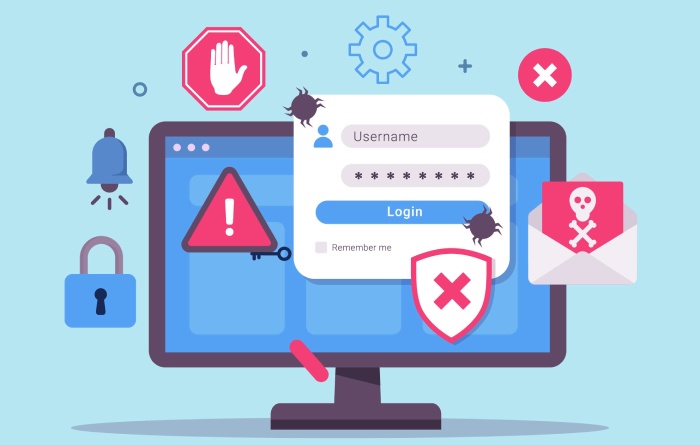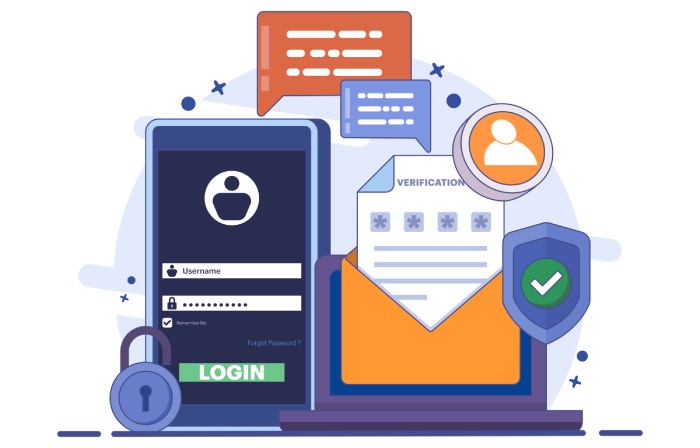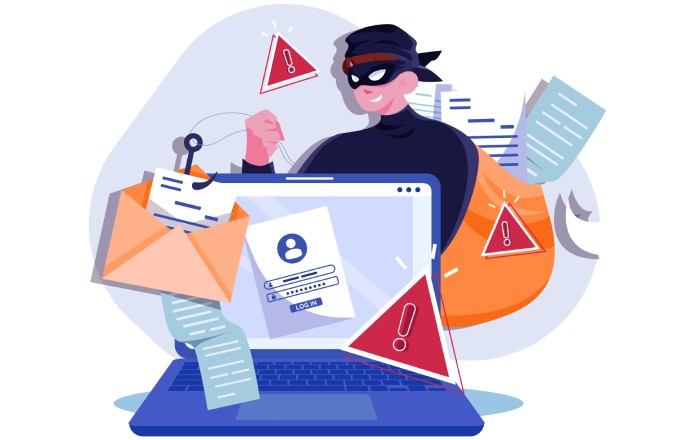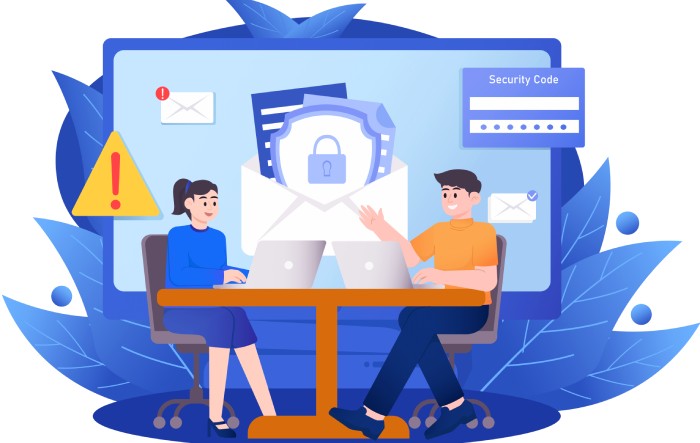Spear phishing represents one of the most sophisticated and targeted forms of phishing attacks in the cybersecurity landscape. Unlike broad phishing campaigns, spear phishing is a highly focused tactic where threat actors tailor the attack to a specific individual or organization. This personalized approach increases the likelihood of success, making spear phishing a significant concern in security risk management and email security.
At its core, spear phishing involves fraudsters crafting deceptive messages—typically emails—that appear legitimate and relevant to their targets. These communications often impersonate trusted contacts, such as colleagues, business partners, or known vendors. The goal is to manipulate recipients into divulging sensitive information, clicking on malicious links, or deploying malicious payloads such as malware or ransomware.
Key characteristics that define spear phishing include:
- Personalization: Utilizes data about the victim, such as job role, recent interactions, or company projects.
- Targeted Content: Messages are contextually relevant to increase credibility.
- Exploitation of Trust: Often mimics a known entity in the target’s network.
- Sophisticated Delivery: Employs advanced techniques to bypass email filtering and evade detection systems.
Organizations seeking effective spear phishing defense must understand these traits to tailor their phishing prevention strategies accordingly.
How Spear Phishing Differs from General Phishing Attacks
While spear phishing falls under the broad category of phishing attacks, it distinguishes itself by its precision and intent. General phishing is indiscriminately aimed at mass audiences, relying on volume rather than accuracy. It typically casts a wide net—such as sending thousands of generic emails promising rewards or requesting password resets—with less concern for individual targeting.
In contrast, spear phishing forms a key element of targeted attacks, focusing efforts on high-value victims such as executives, finance personnel, or individuals with privileged access. This makes it a preferred vector for advanced persistent threats (APTs) that seek long-term infiltration rather than a one-time breach.
The differences manifest in several ways:
- Scope: General phishing targets populations; spear phishing targets individuals or small groups.
- Customization: Spear phishing messages leverage specific details, improving success rates.
- Impact: Breaches from spear phishing often lead to significant data loss or compromise due to the targeted nature of the information accessed.
- Detection Difficulty: Because of the personalized content, spear phishing can better evade traditional filters and firewalls, making tools like Fortinet’s FortiGate and FortiSandbox essential for advanced threat detection.
Consequently, organizations must adopt specialized controls integrated into their security operations, like AI-powered security through platforms such as FortiAI and adaptive email threat protection systems.
Common Techniques Used in Spear Phishing Attacks
Understanding spear phishing tactics provides critical insight into developing robust spear phishing defense mechanisms. Cyber adversaries employ a variety of sophisticated techniques to increase their chances of success, including:
Email Spoofing and Impersonation
Attackers use email spoofing to make messages appear as though they originate from a legitimate sender, often a trusted colleague or vendor. Technologies such as email gateway services with SPF, DKIM, and DMARC verification are essential in combating spoofing.
Malicious Links and Attachments
Spear phishing emails frequently embed URL links that direct victims to cloned websites or initiate downloads of malware-laden attachments. Integration of URL filtering and real-time sandboxing in next-generation firewalls like FortiGate can help detect and block these threats.
Exploiting Social Engineering
By employing advanced psychological tactics—such as urgency, fear, or curiosity—attackers manipulate victims into making unsafe decisions. This social engineering exploits human factors often unaddressed in technical solutions.
Weaponized Documents
Attackers deliver files embedded with macros or exploits that, once opened, execute malware payloads. Organizations can leverage endpoint security platforms like FortiEDR and FortiClient for real-time behavior analysis and threat blocking.
Multi-Stage Attacks
These often incorporate initial intrusion through spear phishing, followed by lateral movement or data exfiltration, necessitating comprehensive security orchestration and incident response workflows orchestrated within a Security Operations Center (SOC).
Psychological Manipulation and Social Engineering in Spear Phishing
Spear phishing’s potency lies largely in its mastery of social engineering—the psychological manipulation of individuals to bypass traditional defenses. Attackers exploit cognitive biases and human emotions, such as trust, authority, compliance, and anxiety, to compel victims to act against their better judgment.
Common examples include:
- Authority Impersonation: Pretending to be a senior executive directing immediate action.
- Reciprocity: Posing as a business partner with a request framed as a favor.
- Urgency and Fear: Creating time-sensitive scenarios to bypass reflection and verification.
- Familiarity: Using personally sourced information to build rapport and legitimacy.
This reliance on human vulnerabilities underlines the necessity of security awareness training in spear phishing defense programs. Training sessions and phishing simulation exercises enable employees to recognize manipulation attempts and follow standardized response protocols.
Security teams can extend this approach by incorporating deception technology like FortiDeceptor, which can lure attackers into monitored traps, revealing attack patterns and intent within the network environment.
Identifying the Target: Why Spear Phishing is Highly Personalized
Central to the effectiveness of spear phishing is the meticulous selection and profiling of targets. Unlike generic phishing, which requires minimal reconnaissance, spear phishing attackers invest considerable effort in gathering intelligence to customize their tactics.
Target Profiling and Intelligence Gathering
Sources may include social media profiles, corporate websites, public databases, or prior breaches, which feed into detailed personas that attackers exploit. This information is critical in formulating convincing narratives that align with the target’s roles, responsibilities, and recent activities.
Role-Based Targeting
Spear phishing often zeroes in on executives (C-level), finance departments, IT administrators, or personnel with privileged access to sensitive data. These targets present prime opportunities for security risk management impact due to their critical information access.
Attack Scenarios Based on Target Roles
- Business Email Compromise (BEC): Posing as executives to request fraudulent wire transfers.
- Credential Harvesting: Targeting IT staff to obtain passwords and network access.
- Data Exfiltration: Exploiting finance teams to uncover confidential reporting.
The customization of spear phishing calls for advanced tooling within network security infrastructures. Solutions like FortiAnalyzer facilitate threat intelligence aggregation and reporting, while FortiNDR and FortiEDR enhance detection of lateral movement post-compromise.
Integration with next-generation firewalls, multi-factor authentication (MFA), and identity and access management (IAM) frameworks further strengthens the defense matrix against these highly refined incursions.
Effective spear phishing defense demands a multi-layered approach combining technical solutions such as Fortinet’s security fabric, endpoint security, and AI-driven detection with comprehensive security awareness training and phishing simulations. Leveraging a capable SOC platform improves incident detection and rapid incident response, curbing damage from these sophisticated targeted attacks. The integration of cybersecurity best practices with evolving technologies is vital in mitigating the ever-growing threat of spear phishing.
Recognizing the Signs of a Spear Phishing Attempt
Spear phishing, a form of highly targeted phishing attack, leverages social engineering techniques to deceive individuals or organizations into divulging sensitive information or installing malware. Recognizing the telltale signs of spear phishing is critical for effective spear phishing defense and overall cybersecurity.
Common Indicators of Spear Phishing Emails
- Personalized Content: Unlike generic phishing, spear phishing emails often include specific details about the recipient, such as their name, job title, or colleagues, which attackers obtain through reconnaissance.
- Urgency or Threats: Attackers create a false sense of urgency, pressuring the recipient to act quickly—e.g., by requesting immediate transfer of funds or disclosure of credentials.
- Unusual Sender Address or Domain: Emails may appear to come from trusted sources but have subtly altered email addresses or misspelled domains.
- Suspicious Links and Attachments: The inclusion of unfamiliar URLs or attachments, often designed to deploy malware or lead to credential harvesting sites, is common.
- Inconsistent Language or Formatting: Spelling errors, grammatical mistakes, or uncharacteristic language can be red flags, especially in communications from formal organizations.
Detection of these signs should trigger heightened scrutiny supported by enforced security awareness training that educates users on identifying such tactics.
Real-World Examples of Spear Phishing Attacks and Their Impact
Understanding real-world spear phishing incidents underscores the severe consequences these targeted attacks can have on organizations and individuals.
The RSA Security Breach (2011)
One of the most notable spear phishing attacks occurred when RSA, a cybersecurity firm, was targeted through a personalized phishing email containing a malicious Excel attachment. The malware installed facilitated an advanced persistent threat (APT) that compromised RSA’s SecurID two-factor authentication tokens, impacting clients globally.
Google and Facebook Scam (2013–2015)
Attackers sent spear phishing emails impersonating a legitimate vendor to finance departments, successfully diverting over $100 million through fraudulent wire transfers—a vivid example of social engineering coupled with financial exploitation.
Impact Analysis
The effects of spear phishing attacks include data breaches, financial loss, reputational damage, and intellectual property theft. Such consequences highlight the importance of integrating spear phishing defense measures within broader security risk management frameworks.
The Role of Email Security Protocols in Spear Phishing Defense
Robust email security protocols form the frontline defense against spear phishing by preventing malicious emails from reaching end users.
Email Filtering and Gateway Technologies
Implementing advanced email filtering solutions, often included in unified threat management (UTM) systems or next-generation firewall platforms like FortiGate, helps identify and block phishing attempts through real-time threat intelligence.
SPF, DKIM, and DMARC Authentication
- Sender Policy Framework (SPF): Validates that the sender IP is authorized to send emails on behalf of the domain.
- DomainKeys Identified Mail (DKIM): Utilizes cryptographic signatures confirming message integrity.
- Domain-based Message Authentication, Reporting & Conformance (DMARC): Enforces policies on emails failing SPF and DKIM checks.
These protocols collectively reduce email spoofing risks, a common tactic in spear phishing.
Sandboxing and URL Filtering
Modern email threat protection solutions incorporate sandboxing to safely analyze suspicious attachments and URL filtering to block access to malicious domains, crucial for mitigating malware propagation and credential theft.
Implementing Multi-Factor Authentication to Mitigate Risks
Multi-factor authentication (MFA) adds a vital layer of security in defending against spear phishing and broader cybersecurity threats by requiring multiple verification methods before granting access.
MFA as an Effective Spear Phishing Defense
Even if attackers successfully harvest usernames and passwords through phishing, MFA—whether via hardware tokens, biometrics, or authenticator apps—significantly reduces unauthorized account access.
Integration with Identity and Access Management (IAM)
MFA is a key component of Zero Trust security architectures, reinforcing identity and access management protocols to ensure continuous verification, minimizing attack surfaces exposed by spear phishing.
Employee Training and Awareness Programs: Building a Human Firewall
Because spear phishing exploits human behavior, investing in comprehensive security awareness training is essential to strengthen the organization’s security posture.
Security Awareness Training Initiatives
- Phishing Simulation Exercises: Best practice involves regular, realistic phishing simulations to assess and enhance user vigilance.
- Tailored Content Delivery: Educational programs should focus on teaching employees how to identify social engineering tactics specific to spear phishing.
- Ongoing Updates and Reinforcement: Continuous training efforts ensure users remain informed about evolving attack methods.
Partners like Fortinet offer Security Awareness Training programs integrated with SOC platforms, helping organizations build human firewalls that complement technical controls.
Creating a Culture of Security
Encouraging reporting of suspicious emails and fostering communication between employees and security operations centers enhances early incident detection and response, reducing potential damage from attacks.
Using Technology: Anti-Phishing Software and AI-Based Detection Tools
Technological innovation has become indispensable in spear phishing defense, particularly leveraging AI-powered security tools that enhance threat detection accuracy and response efficiency.
AI-Powered Email Security Solutions
Solutions like FortiGuard Email Security and FortiAI utilize machine learning to analyze email content, origins, and user behavior patterns to detect spear phishing indicators before delivery.
Endpoint Security and Endpoint Detection and Response (EDR)
Deploying FortiClient combined with FortiEDR protects endpoints by detecting malware introductions and suspicious activities initiated through spear phishing campaigns, enabling automated incident response.
Security Operations Center (SOC) Platforms and Automation
Integrating AI security services within SOC platforms, such as FortiAnalyzer and FortiMonitor, provides comprehensive visibility and context-rich analytics, enabling security orchestration and automated incident response workflows.
Additional Protective Technologies
- Deception Technology: Tools like FortiDeceptor create traps to identify malicious actor behavior early.
- Sandboxing: FortiSandbox analyzes files in isolated environments to expose zero-day threats embedded in spear phishing payloads.
- Threat Intelligence Integration: FortiGuard Labs aggregates global threat data to update email filtering and detection systems in real time, enhancing phishing protection.
Through combining vigilant human awareness with advanced cybersecurity technologies, organizations strengthen spear phishing defense mechanisms, suitably adapting to the evolving threat landscape. Fortinet’s comprehensive security fabric and AI-driven portfolio offer integrated solutions that address both technical and operational needs within security operations, ensuring resilient protection against targeted spear phishing attacks.
Through combining vigilant human awareness with advanced cybersecurity technologies, organizations strengthen spear phishing defense mechanisms, suitably adapting to the evolving threat landscape. Fortinet’s comprehensive security fabric and AI-driven portfolio offer integrated solutions that address both technical and operational needs within security operations, ensuring resilient protection against targeted spear phishing attacks.
Incident Response Strategies for Spear Phishing Breaches
An effective incident response strategy forms the backbone of any robust spear phishing defense framework. Given the intricacy and targeted nature of spear phishing, swift and structured incident response is crucial to minimize damage and facilitate rapid recovery.
Immediate Detection and Containment
Early detection is pivotal for incident response in spear phishing breaches. Leveraging AI-powered security tools like FortiAI and FortiNDR can enable Security Operations Centers (SOC) to identify anomalies consistent with spear phishing and malware infiltration rapidly. Once detected, endpoint security solutions such as FortiEDR should be activated to isolate affected systems. Email filtering and next-generation firewalls like FortiGate play essential roles in preventing lateral movement by blocking command and control communications and malicious payloads.
Comprehensive Analysis and Forensics
Following containment, incident detection teams must perform detailed forensic analysis using tools such as FortiAnalyzer and FortiSandbox. This process involves understanding the entry vectors, the scope of data compromised, and the specific tactics employed in the phishing attack. Incorporating threat intelligence and security analytics allows SOC platforms to enhance accuracy in attributing attacks, often symptomatic of advanced persistent threats (APT) exploiting social engineering.
Communication and Incident Management
Incident response is multi-stakeholder. Effective coordination between the cybersecurity team, executive management, and legal departments facilitates regulatory compliance and helps manage reputational risks. Employing a Security Orchestration, Automation, and Response (SOAR) system helps automate workflow and accelerates incident management. Timely communications through pre-established security policies also aid in reducing misinformation and maintaining trust.
Recovery and Post-Incident Measures
Rebuilding trust and infrastructure demands rigorous post-incident actions, including resetting access credentials (incorporating multi-factor authentication), updating identity and access management protocols, and remediating vulnerabilities identified during the attack. Deploying continuous endpoint detection and response (EDR) solutions ensures such attacks are less likely to recur. Moreover, integrating lessons learned into security awareness training helps fortify human elements against future social engineering attacks.
The Importance of Regular Security Audits and Penetration Testing
Security audits and penetration testing are indispensable components of an overarching cybersecurity strategy, particularly focused on spear phishing defense.
Identifying Vulnerabilities in Email Security and Network Infrastructure
Regular security audits provide a comprehensive assessment of email gateways, endpoint security, network security, and cloud security infrastructures. Audits often reveal misconfigurations, outdated software, and gaps in unified threat management systems, including next-generation firewalls, DNS filtering, and URL filtering solutions. Penetration testing simulates spear phishing and other cyberattacks to test real-world defenses’ effectiveness.
Enhancing Security Policies and Controls
Penetration testers can identify weaknesses in an organization’s security policies and controls, especially around incident response readiness, phishing prevention measures, and endpoint protection practices. This dynamic evaluation helps refine security subscriptions and policies, automating detection and prevention capabilities, and improving firewall migration strategies to next-generation architectures like FortiGate.
Supporting Compliance and Risk Management
Audits and penetration tests also help organizations demonstrate compliance with regulatory requirements and frameworks for security risk management. The insights derived support decision-making concerning investments in security automation, AI-powered security services, and continuous monitoring solutions such as FortiMonitor and FortiManager, aligning cybersecurity postures to evolving threat landscapes.
Collaboration Between IT and HR for Spear Phishing Prevention
Spear phishing defense benefits substantially from unified efforts between Information Technology (IT) and Human Resources (HR) departments, addressing both technical and human vulnerabilities.
Integrating Security Awareness Training and User Education
IT teams typically manage the deployment of technical controls such as next-generation firewalls, endpoint security tools, and email threat protection systems. However, HR is essential in driving effective security awareness training programs designed around social engineering threats like spear phishing. Together, they can coordinate phishing simulation exercises and continuous education initiatives to cultivate a human firewall within the enterprise.
Developing Robust Security Policies and Incident Reporting Culture
Collaboration is key in crafting and enforcing security policies that emphasize prompt reporting of suspicious emails and adherence to identity and access management standards, such as zero trust and multi-factor authentication. HR can integrate security responsibilities into employee onboarding and code-of-conduct documents, reinforcing accountability.
Enhancing Incident Response and Employee Support
Post-incident, HR can provide psychological support and guidance to affected employees, mitigating the risk of insider threats or inadvertent repeat breaches. Coordination between IT and HR ensures that threat exposure management extends beyond technology, fostering a comprehensive security fabric.
Future Trends in Spear Phishing and How to Stay Prepared
As threat actors evolve their methods, spear phishing techniques are becoming more sophisticated, combining social engineering with advanced technologies. Staying prepared requires anticipating these trends through continuous innovation in cybersecurity strategies.
Rise of AI-Driven Phishing Attacks
The adoption of generative AI models by attackers to create convincing phishing emails is an emerging concern. AI-powered spear phishing can bypass traditional detection methods by mimicking natural human writing styles and personalized context. Consequently, deploying AI security services and leveraging SOAR platforms integrated with FortiGuard threat intelligence is critical for adaptive defense.
Integration of GenAI Security and Automation
Organizations are increasingly adopting GenAI security solutions to enhance threat detection, automate incident response, and improve phishing prevention measures. Automation expedites the processing of large volumes of email traffic, enabling real-time email filtering and intrusion prevention. Technologies like FortiAI and FortiDeceptor can detect deception technologies employed by attackers, strengthening overall spear phishing defense.
Expansion of Zero Trust and Secure SD-WAN Models
A shift toward zero-trust architecture, coupled with secure SD-WAN implementations, ensures that both internal and external communication channels maintain granular access control and resilient network security. This minimizes the potential attack surface for spear phishing and related social engineering exploits, as vetted by leaders like Gartner and KuppingerCole.
Enhanced Collaboration with Cloud Service Providers and Security Fabric Ecosystems
Future cybersecurity strategies will rely heavily on integrated security fabrics and partnerships with cloud service providers (CSPs) to secure cloud-native applications and data. Utilizing Fortinet’s security subscriptions portfolio, including cloud firewalls and security orchestration tools, aligns organizations with the evolving threat environment through proactive threat detection and fortification of email security.
FAQs
What is the primary difference between spear phishing and regular phishing attacks?
Spear phishing targets specific individuals or organizations using personalized information to increase credibility, while regular phishing casts a wide net with generic messages. This targeted approach makes spear phishing harder to detect and more dangerous.
How do AI-powered security tools improve spear phishing defense?
AI-powered security tools, like FortiAI and FortiEDR, use machine learning algorithms to detect anomalies and suspicious behavior rapidly. They enhance threat detection, automate incident response, and adapt to evolving phishing tactics, improving cybersecurity posture.
Why is collaboration between IT and HR important in preventing spear phishing?
Combining IT’s technical defenses with HR’s role in security awareness training and user education establishes a comprehensive human and technological protective barrier. This synergy strengthens spear phishing prevention and helps build a security-conscious culture.
How often should organizations conduct security audits and penetration tests?
Organizations should perform security audits and penetration tests at least annually or more frequently, particularly after significant infrastructure changes or emerging threat trends. Regular testing identifies vulnerabilities in real-world scenarios, enhancing phishing prevention.
What role do next-generation firewalls play in defending against targeted spear phishing attacks?
Next-generation firewalls like FortiGate provide advanced email filtering, URL filtering, malware detection, and intrusion prevention capabilities that detect and block malicious payloads associated with spear phishing. They act as pivotal components of network security.
Key Takeaways
- Effective incident response combines rapid threat detection with forensic analysis and coordinated communication to minimize spear phishing damage.
- Regular security audits and penetration testing expose vulnerabilities, bolstering phishing prevention and security risk management.
- Collaboration between IT and HR fosters comprehensive spear phishing defense through combined technical controls and security awareness training.
- Emerging trends in AI-driven spear phishing require integrating GenAI security, automation, zero trust frameworks, and cloud-native protection.
- Leveraging Fortinet’s SOC platform and AI-powered security tools enhances the detection, prevention, and response to sophisticated spear phishing and targeted attacks.









